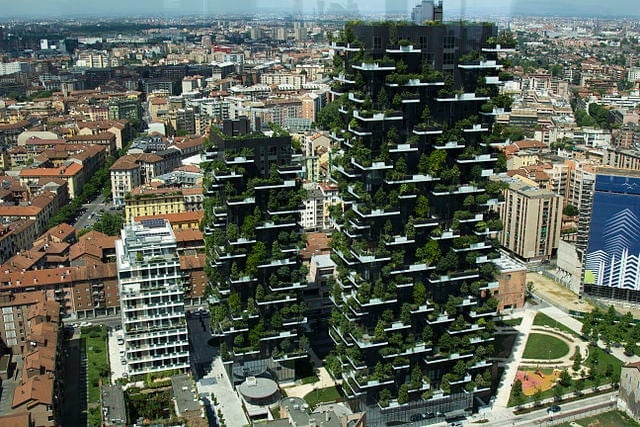COP21 SERIES: Designers Should Be Health Advocates at the Paris Negotiations
Adele Houghton
Human health is taking a front seat in the run up to the international climate change negotiations (COP21) in Paris in November/December, as evidenced by two recent publications: the papal encyclical, Laudato Si’, released in May by Pope Francis and the report released in June by the highly respected Lancet Commission on Health and Climate Change. These publications were immediately followed by a White House summit on climate change and health, which resulted in the release of eight actions to protect US communities from the health effects of climate change.
Both documents highlight energy efficiency and renewables as key components of global efforts to reduce greenhouse gas (GHG) emissions. Direct emissions from building operations (such as burning natural gas) coupled with electricity use accounts for 43% of US GHG emissions annually, according to the US EPA, with transportation between and among buildings accounting for an additional 27%.
The design community has begun to take a leadership role in the global effort to reduce society’s contribution to climate change through net-zero initiatives like the 2030 Challenge and net-positive programs like the Living Building Challenge.
However, more can be done.
In Laudato Si’, Pope Francis contends that energy efficiency measures and renewable energy installations can reduce both future GHG emissions and the current burden of poverty among the world’s most vulnerable populations. These are the groups of people who are already bearing the brunt of climate-related events. And, they are the least able to bounce back after disasters.
The Lancet Commission identifies specific health outcomes associated with each strategy. Replacing fossil fuel energy sources with renewable energy can lead to improved cardiovascular and respiratory health among populations downwind from legacy power plants. Energy efficiency, together with access to active transportation and green spaces, is a key feature of green urbanism. The litany of health benefits associated with these improvements to the built environment includes the most prevalent and costly diseases facing the world today: cardiovascular and respiratory disease, cancer, obesity, diabetes, and mental illness.
Happily, many design solutions aimed at reducing chronic disease can also increase both human and infrastructure resilience to climate change. However, in practice, the power of design to improve health outcomes can only be unleashed when it is applied to the unique environmental, demographic, and economic context of a specific site. The papal encyclical acknowledges this fact, recommending that all development projects not only integrate an Environmental Impact Assessment into the design process from the very beginning but also conduct a parallel assessment “of working conditions and possible effects on people’s physical and mental health, on the local economy and on public safety.” While still an emerging field in the US, many large-scale developments and transportation projects have begun to fund this type of study using a methodology called Health Impact Assessments (HIAs).
Architects and designers set the context within which we spend our lives. Design influences how many tons of carbon dioxide will be emitted into the atmosphere each year; how many pedestrians and cyclists will be able to travel safely each day between home and work; how many children will miss school this year because of respiratory problems related to ground-level ozone and unhealthy interiors; how many elders with weak hearts will be spared a trip to the emergency room during the next heat wave; and, how many individuals suffering from chronic diseases such as obesity and diabetes will be able to follow their doctors’ instructions on active living and healthy eating.
It is time for the design community to take ownership of this immense responsibility. Evidence-based, data-driven tools like HIAs, can assess the specific risks, needs, and opportunities unique to each design project. These tools have made it possible to gather industry-wide data on the relative effectiveness of specific design strategies to reduce the health effects of climate change—similar to the data gathering and analysis currently underway in the green building sector targeting energy and water efficiency.
In spite of the urgency underlying the Lancet Commission report, it concludes on a positive note, proposing that, “tackling climate change could be the greatest global health opportunity of this century.” Similarly, Pope Francis writes: “It is not enough to seek the beauty of design. More precious still is the service we offer to another kind of beauty: people’s quality of life, their adaptation to the environment, encounter and mutual assistance.”
The groundswell of attention being paid to the health effects of climate change in the run up to COP21 offers the design community a unique opportunity to take that message to heart. In the past, some land use decisions have contributed to both climate change and the global chronic disease epidemic. It is now time for the design community to turn that paradigm on its head and lead the way towards building a low carbon, resilient, and healthy world.
Adele Houghton, president of Biositu LLC, is a registered Architect and green building professional. She holds a Master of Public Health and a Certificate in Public Health Informatics. Examples of designs that reduce the site-specific health risks of climate change can be found on the Biositu LLC blog, Building Public Health.


